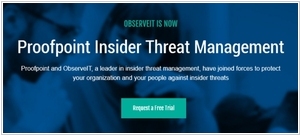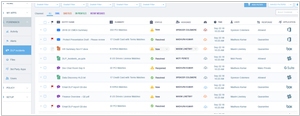Proofpoint is #1 in Top 10 DLP software
Proofpoint allows to protect your people from advanced email attacks and identity-based threats, defend sensitive data from theft, loss and insider threats.
Positions in ratings
#1 in Top 10 DLP software
#2 in Top 15 Email Security software
Alternatives
The best alternatives to Proofpoint are: Mimecast, Forcepoint, Barracuda, Cisco Secure Email, KnowBe4, Microsoft Purview, Abnormal, Avanan, Microsoft Defender
Latest news about Proofpoint
2019. Proofpoint acquires insider threat intelligence firm ObserveIT

In a strategic move to strengthen its enterprise cybersecurity portfolio, Proofpoint has successfully acquired ObserveIT, a leading threat management provider, for $225 million. With a broad global presence and a client base of 1,900 companies across 87 countries, ObserveIT offers real-time enterprise network management, alerts for suspicious activities, and aids businesses in adhering to cybersecurity-related legal requirements. Proofpoint aims to leverage ObserveIT's cutting-edge technology to enhance its data loss prevention (DLP) capabilities. By integrating ObserveIT's endpoint and data risk analytics solutions with Proofpoint's existing information classification, threat detection, and intelligence offerings, the combined forces will deliver a more robust and comprehensive cybersecurity solution to their customers.
2018. Proofpoint acquires cybersecurity awareness training platform Wombat Security

Proofpoint, a prominent email security firm, has successfully finalized its purchase of Wombat Security Technologies Inc. for a total of $225 million. Wombat, which was established a decade ago by three computer science professors from CMU, aimed to capitalize on cutting-edge university research related to cyber attack prevention. It has earned widespread acclaim for being at the forefront of cybersecurity awareness training. Unlike conventional methods, Wombat adopted a unique approach of sending simulated phishing emails to employees' inboxes, which has now become the prevailing industry standard. This innovative method demonstrated a significantly higher likelihood of capturing employees' attention and, when combined with subsequent training, proved highly effective in substantially reducing vulnerability to such attacks.


